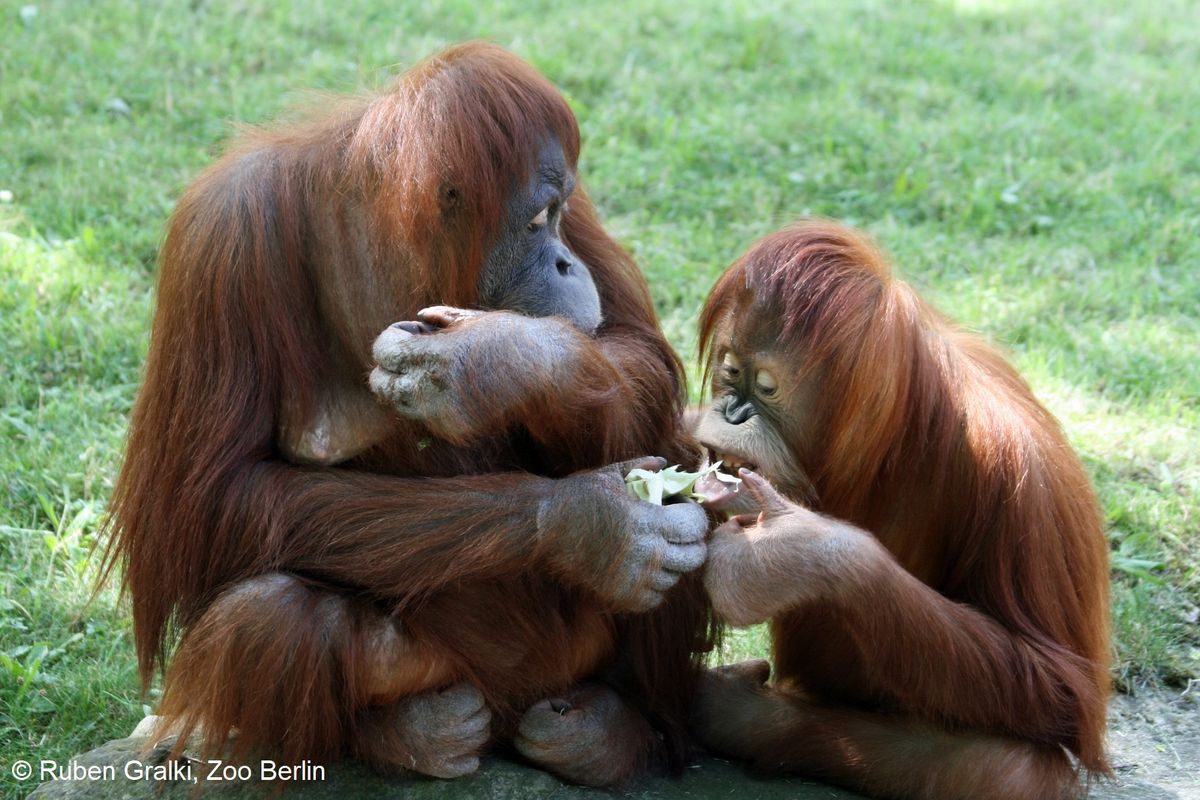In many, but not all, primate species, adult individuals sometimes share their food with immatures, usually with their offspring, by letting them take some food.
In many, but not all, primate species, adult individuals sometimes share their food with immatures, usually with their offspring, by letting them take some food. This so-called passive food sharing is non-human primates' most frequent form of tolerated food transfers. In contrast to humans, however, food sharing among adults is much less common. It is prevalent only in a subset of primate species, particularly the great apes. In certain situations, namely when some individuals monopolise compact food items (e.g. prey or large fruits), they may not only tolerate a conspecific taking some of the food but facilitate or even conduct the transfer themselves, i.e. pass some food over. Such active food sharing has been observed in adult great apes in their natural habitat, zoos and sanctuaries. It usually occurs upon response to specific request behaviours, e.g., gestures, actions, body postures, facial expressions, vocalisations, or a combination of them.
Food sharing in great apes serves more than one function. Besides the nutritional benefit, food transfers with immatures play a role in social learning about eatable food, where and when to find and how to process or extract it (such as nuts, hard-shelled fruits, insects or honey). Among adult chimpanzees, bonobos and orangutans, food is usually selectively shared with particular partners and is probably a means to establish and maintain social relationships.
Building on our previous research with orangutans and chimpanzees (e.g. Kopp & Liebal, 2016; Kopp, Ebel et al. in prep., Liebal & Rossano, 2017; Rossano & Liebal, 2014), we investigate food sharing and interactions over food in non-human primates, particularly in apes. We are especially interested in the ontogenetic development of food-related communication, i.e. requests and responses, and in the occurrence, behavioural patterns and proximate functions of active food sharing and their variation within and across primate species.
To learn comprehensively about the who with whom, how, when and why of food sharing, we conduct observations of daily food interactions and food-sharing tests with primate groups in various zoological gardens and African sanctuaries. Furthermore, we collaborate with scientists studying wild populations of great apes.
Publications
- The give and take of food sharing in Sumatran orang-utans, Pongo abelii, and chimpanzees, Pan troglodytes
Liebal K, Rossano F
Animal Behaviour. 2017 Nov;133:91–100.
DOI: 10.1016/j.anbehav.2017.09.006 - Here you are!—Selective and active food sharing within and between groups in captive Sumatran orangutans (Pongo abelii)
Kopp KS, Liebal K
Behavioral Ecology and Sociobiology. 2016 May;70(8):1219–1233.
DOI: 10.1007/s00265-016-2130-2 - 'Requests' and 'offers' in orangutans and human infants
Rossano F, Liebal K
In: Drew P, Couper-Kuhlen E: Requesting in Social Interaction
John Benjamins Publishing Company. 2014;335–364.
